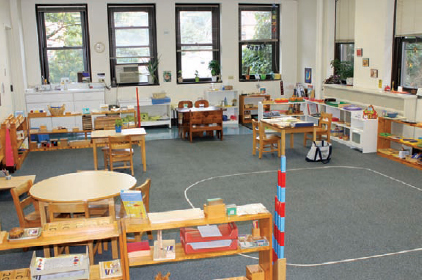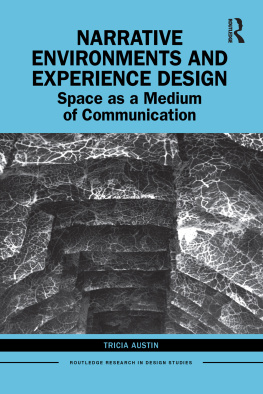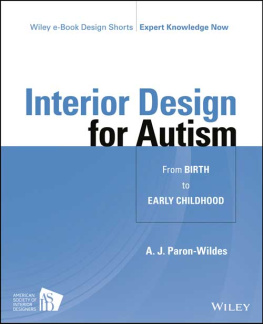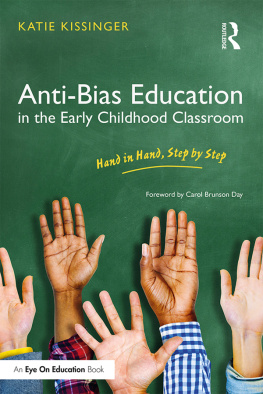
Published by Redleaf Press
10 Yorkton Court
St. Paul, MN 55117
www.redleafpress.org
2015 by Linda M. Zane
All rights reserved. Unless otherwise noted on a specific page, no portion of this publication may be reproduced or transmitted in any form or by any means, electronic or mechanical, including photocopying, recording, or capturing on any information storage and retrieval system, without permission in writing from the publisher, except by a reviewer, who may quote brief passages in a critical article or review to be printed in a magazine or newspaper, or electronically transmitted on radio, television, or the Internet.
This book is based on A Pattern Language: Towns, Buildings, Construction by Christopher Alexander, Sara Ishikawa, and Murray Silverstein. Copyright 1977 by Christopher Alexander. Permission granted by the Center for Environmental Structure.
First edition 2015
Cover design by Jim Handrigan
Cover photograph by Linda M. Zane
Interior design by Erin Kirk New
Typeset in Chapparal, Glypha, and Tekton
Interior photos by Linda M. Zane
21 20 19 18 17 16 15 14 1 2 3 4 5 6 7 8
Library of Congress Cataloging-in-Publication Data
Zane, Linda.
Pedagogy and space : design inspirations for early childhood classrooms / Linda Zane.
pages cm.
Summary: Colorful photographs of intentionally designed spaces will inspire you as you dream, plan, build, and revamp settings. Inspired by the groundbreaking architectural book A Pattern Language: Towns, Buildings, Construction, this resource aims to glean architectural information regarding important design patterns in an environment and utilize them to provide insight into early childhood environments that are both developmentally appropriate and aesthetically pleasingProvided by publisher.
Includes bibliographical references and index.
ISBN 978-1-60554-359-8 (eBook)
1. Education, PreschoolUnited StatesPlanning. 2. Child careUnited StatesPlanning. 3. Classroom environmentUnited States.
I. Title.
LB1140.23.Z36 2015
372.21dc23
2014021504
Printed on acid-free paper
CONTENTS
Many people have helped bring this book to fruition. A sincere thanks is extended to David Heath, Kyra Ostendorf, and those at Redleaf Press who have allowed me to share the concept of Pedagogy and Space with early childhood professionals everywhere. Thanks also to Danny Miller, whose editing contributions masterfully shaped the text into a polished final product.
A debt of gratitude goes out to the many Pittsburgh-based National Association for the Education of Young Childrenaccredited child care programs that graciously agreed to share their inspiring indoor and outdoor spaces. Photos from the following programs are shared within the pages of this book, and I am truly grateful to each for allowing me to capture elements of their wonderful programs. Many of those listed here have been dear friends for a long time, and some are new friends. Thank you to each for your fierce commitment to providing high-quality experiences to the children of Pittsburgh. Thank you as well to the Waldorf School of Philadelphia who generously contributed photos of their whimsical classroom spaces.
The Campus School of Carlow UniversityMichelle Peduto, Executive Director http://campusschool.carlow.edu
Carriage House Childrens CenterNatalie A. Kaplan, President and Founder www.carriagehouse.org
The Childrens School at Carnegie Mellon UniversityDr. Sharon M. Carver, Director and Professor www.psy.cmu.edu/cs
Cyert Center for Early EducationCarla Freund, Administrative Director www.cmu.edu/cyert-center
The Glen Montessori SchoolJacqueline Downing Herrmann, Head of Education www.glenmontessori.org
Noahs Ark PreschoolGerda K. Moul, Director http://ourredeemer-peters.org/preschool.html
Riverview Childrens CenterBetty Liskowski, Director www.riverviewchildrenscenter.org
Room to Grow Child Development CenterCarrie Dunkowski, Director www.ymcaofpittsburgh.org/room-to-grow
Shady Lane SchoolGina Capriotti, School Director www.shadylane.org
Stepping Stones Childrens CenterLynn Kline, Director www.stepstonescc.org
Tender Care Learning Centers (Robinson Township Site)Charzzi White, Director www.earlyeducationpros.org/index.jsp
The Waldorf School of Philadelphia http://phillywaldorf.com
I must express my love and gratitude to my ever-supportive husband, Paul, who is a constant source of strength, and whose patience and encouragement have seen me through many long days of writing. Much love and gratitude are extended to my daughters, Marissa and Rebecca, for their invaluable assistance at various stages during the development of the book. My parents, John and Betty Ann Manes, deserve a world of thanks for undergirding me since childhood with unconditional love and a sense of faith and purpose. And I am thankful to my God, who has led, is leading, and will lead me one step at a time, lovingly guiding me through whatever comes my way.
Pedagogy and Space
Does classroom design matter to you? Does it impact the children in your care? How about the families who visit your program? You spend many of your waking hours in a particular classroom environment. How much time do you spend thinking about the design and arrangement of this environment?
For many of us, the design of our physical environment is as invisible as the air we breathe or the sun that shineswe just dont think about it. These invisible elements tend to draw our attention only when they are missing or obviously deficient. But make no mistake, the physical environment in which you spend your time, whether you consciously realize it or not, matters a great deal.
If a picture is worth a thousand words, photographs of classroom environments should speak volumes about the learning experiences that occur there. Look closely at the following photographs of early childhood classroom environments. Each environment has similar elements, but many differences can be seen. If you were a child or teacher in any of these classrooms, how do you think your daily experiences might differ?
Consider the lighting. What is the source of light in each classroom? Do the classrooms seem light and airy, utilizing lots of natural light? Or are they dark and claustrophobic, using mostly artificial light?
Consider the materials used in the classroom decor. Are these materials natural or artificial? Do they seem current and fresh, or do they hearken back to an earlier era? Do they project a sense of warmth or a feeling of institutionalization?
Consider the arrangement of furniture within the classroom. Is the room spacious, allowing for children and teachers to circulate between areas? Or does the room seem crowded, leaving little room to maneuver and visit friends?
Consider the learning opportunities afforded by each classroom setting. Does the focal point of the room appear to be play oriented, or is it academically driven? Are interesting, engaging activities visibleones that will promote creative, divergent thinking? Does the atmosphere send a message of child-centered exploration, or does it seem to reflect teacher-centered instruction?


Now consider your own classroom or program. How does it compare with those shown here? If you entered your classroom as an outsider, what messages might you pick up based on the physical environment?
Next page












